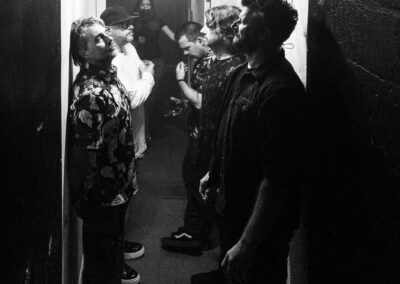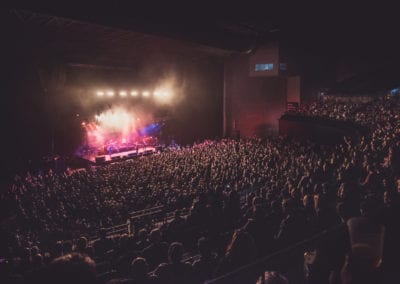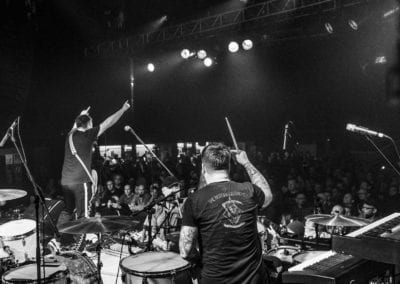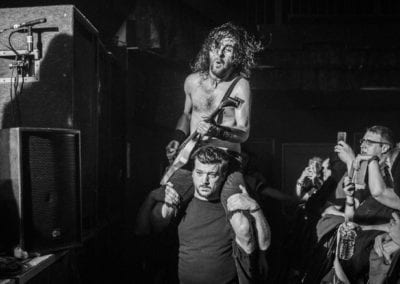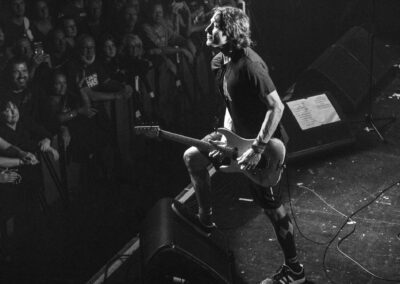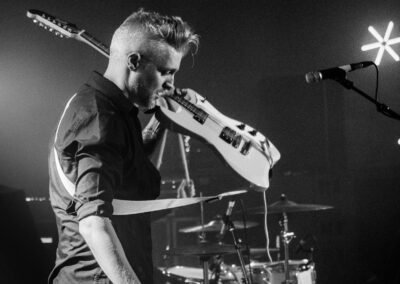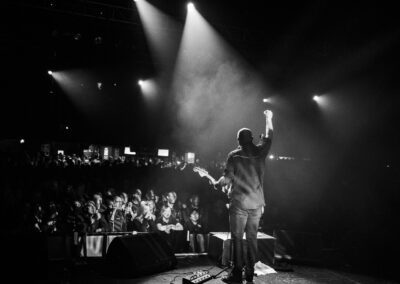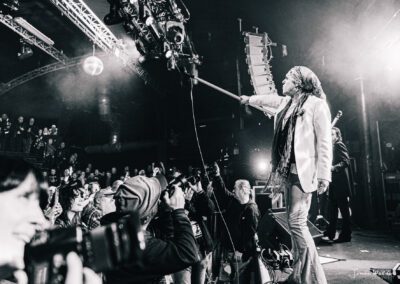Music photography is a unique and challenging genre that requires both technical skill and creative vision. At its best, music photography captures the energy, passion, and emotion of the live performance, and offers a window into the world of music that can transport us to a different place and time.
Whether you’re a professional photographer or a music fan with a camera, here are some tips and insights to help you get the most out of your music photography.
Know your equipment
Music photography is all about capturing fleeting moments in challenging conditions. That means you need to know your camera and lenses inside and out and be able to adjust settings on the fly. Invest in high-quality gear, practice with it often, and know how to adjust your ISO, aperture, shutter speed, and focus quickly and accurately.
Embrace the chaos
Live music is messy, unpredictable, and often chaotic. As a music photographer, you need to be comfortable working in this environment and be ready to adapt to changing conditions. Don’t be afraid to experiment with different angles, compositions, and techniques, and be prepared to take risks to get the shot you want.
Limited Access
In some cases, photographers may have limited access to the stage or restricted areas of the venue, which can make it difficult to get the shots they want. They may need to rely on long lenses or creative framing to capture the action from a distance.
Capture the energy
Music photography is all about capturing the energy of live performance. Look for moments of movement, emotion, and interaction between performers and the audience. Try to anticipate key moments in the performance, such as a guitar solo or a stage dive, and be ready to capture them with your camera.
Pay attention to the lighting
Lighting is one of the most critical aspects of music photography. Pay attention to the venue’s lighting and adjust your camera settings accordingly. Look for moments of dramatic lighting, such as a spotlight on a singer or a wash of coloured light on the stage, and use it to your advantage.
Tell a story
Music photography is more than just taking pictures of performers on stage. It’s about telling a story and capturing the essence of the performance. Look for moments that capture the mood and atmosphere of the event, and try to tell a story with your images.
Fast Movement and Action
Musicians are known for their fast movements and energetic performances, which can make it challenging to capture the perfect shot. Photographers must be able to anticipate the movements of the musicians and be quick with their camera settings and framing.
Build relationships
Music photography is a collaborative effort between the photographer, the performers, and the audience. Build relationships with the people you’re photographing and try to capture their personalities and emotions in your images. Be respectful of the performers’ space and time, and always ask permission before taking pictures of the audience.
Limited Access
In some cases, photographers may have limited access to the stage or restricted areas of the venue, which can make it difficult to get the shots they want. They may need to rely on long lenses or creative framing to capture the action from a distance. Some music venues can be crowded and chaotic, with fans jostling for space and obstructing the view. Photographers must be able to navigate these crowded spaces and position themselves in a way that allows them to capture the action without interfering with the performance or the audience.
Sharing Your Passion
Music photography is a way to share your passion for music and photography with others. By sharing your images on social media, in galleries, or in other public spaces, you can connect with others who share your love of music and photography, and inspire them to explore this exciting genre for themselves.
Experiment and have fun
Finally, music photography is an opportunity to experiment and have fun with your camera. Don’t be afraid to try new things, experiment with different techniques and settings, and push the boundaries of what’s possible with your camera. Most of all, enjoy the music and the people you’re photographing and let your passion for both shine through in your images.
In conclusion, music photography is a challenging and rewarding genre that requires technical skill, creative vision, and a passion for music and storytelling. By following these tips and insights, you can capture the essence of live performance and create images that transport us to a different place and time.

